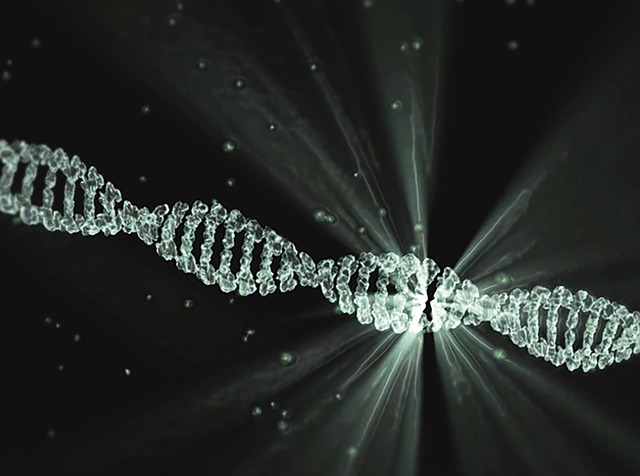8 Oct. 2018. Research with lab mice shows prenatal genome editing with techniques including Crispr can correct an inherited defect associated with a fatal congenital liver disorder. Findings from a study by researchers at Children’s Hospital of Philadelphia and University of Pennsylvania medical school appear in today’s issue of the journal Nature Medicine (paid subscription required).
The team led by CHoP’s William Peranteau, a specialist in fetal surgery, and UPenn geneticist Kiran Musunuru seek to determine the feasibility of genome editing to correct congenital diseases that in many cases can be fatal to newborn infants. In this case the disease is hereditary tyrosinemia type 1, or HT1, where the body fails to break down the amino acid tyrosine allowing it to build-up in tissues and organs. Infants fail to tolerate food, which reduces their growth and leads to vomiting, diarrhea, jaundice (yellowing of skin), and increased bleeding.
Advanced cases lead to liver and kidney failure, softening of bones, higher risk of liver cancer, and neurological problems. Children with HT1 left untreated often do not survive past the age of 10. The only treatment is the small molecule drug nitisinone that blocks the chain of enzyme failures resulting from an accumulation of tyrosine, and a strict, low-protein diet.
Peranteau, Musunuru, and colleagues used genome editing to remove hereditary defects in lab mice genetically engineered to express mutations that result in HT1. One of the genome editing techniques employed is Crispr, short for clustered regularly interspaced short palindromic repeats, a process for editing genomes based on bacterial defense mechanisms that use RNA to identify and monitor precise locations in DNA. The actual editing of genomes with Crispr in this and most cases today is an enzyme known as Crispr-associated protein 9 or Cas9. RNA molecules guide the editing enzymes to specific genes needing repair.
By itself, however, Crispr-Cas9 editing can be imprecise, causing unwanted breaks in DNA and more genomic errors if the initial break is not closed correctly. To avoid unwanted or erroneous DNA breaks, the researchers supplemented Crispr with base editing, which opens the DNA and edits the mutation by adjusting the nucleic acid chemistry at precise points. This enhancement to Crispr is described in a May 2018 story in Science & Enterprise about a company commercializing the technology.
In this study, the CHoP-UPenn researchers used a combination of Crispr and a base editor that targets specific points in the genome of fetal liver cells in the engineered lab mice. The team reports the edits corrected defects in the HPD gene that provides instructions for producing enzymes to break down tyrosine. The researchers used benign adeno-associated viruses to deliver the Crispr-base editor package, which was adequate for proving the concept, but these viruses can cause adverse effects, and more clinically-acceptable methods may be needed in the future. The researchers also fixed induced fetal defects in the PCSK9 gene that produces a protein for regulating cholesterol in the blood stream, which Musunuru studied previously.
After birth, the genome-edited mice had normal-functioning liver cells and showed no evidence of unwanted DNA edits for 3 months. During this time, the test mice also showed signs of better health than comparable mice induced with HT1 and treated with nitisinone.
“Our ultimate goal is to translate the approach used in these proof-of-concept studies to treat severe diseases diagnosed early in pregnancy,” says Peranteau in a CHoP-UPenn statement. “We hope to broaden this strategy to intervene prenatally in congenital diseases that currently have no effective treatment for most patients, and result in death or severe complications in infants.”
More from Science & Enterprise:
- Appeals Court Backs Broad Institute in Crispr Case
- Allergan Licensing Crispr for Inherited Eye Disease
- More Damage Detected from Crispr-Cas9 Edits
- UC-Berkeley Gains U.S. Crispr-Cas9 Patent
- NIH, Biotech Partner on Electro-Aided Crispr for Sickle Cell
* * *


 RSS - Posts
RSS - Posts
You must be logged in to post a comment.